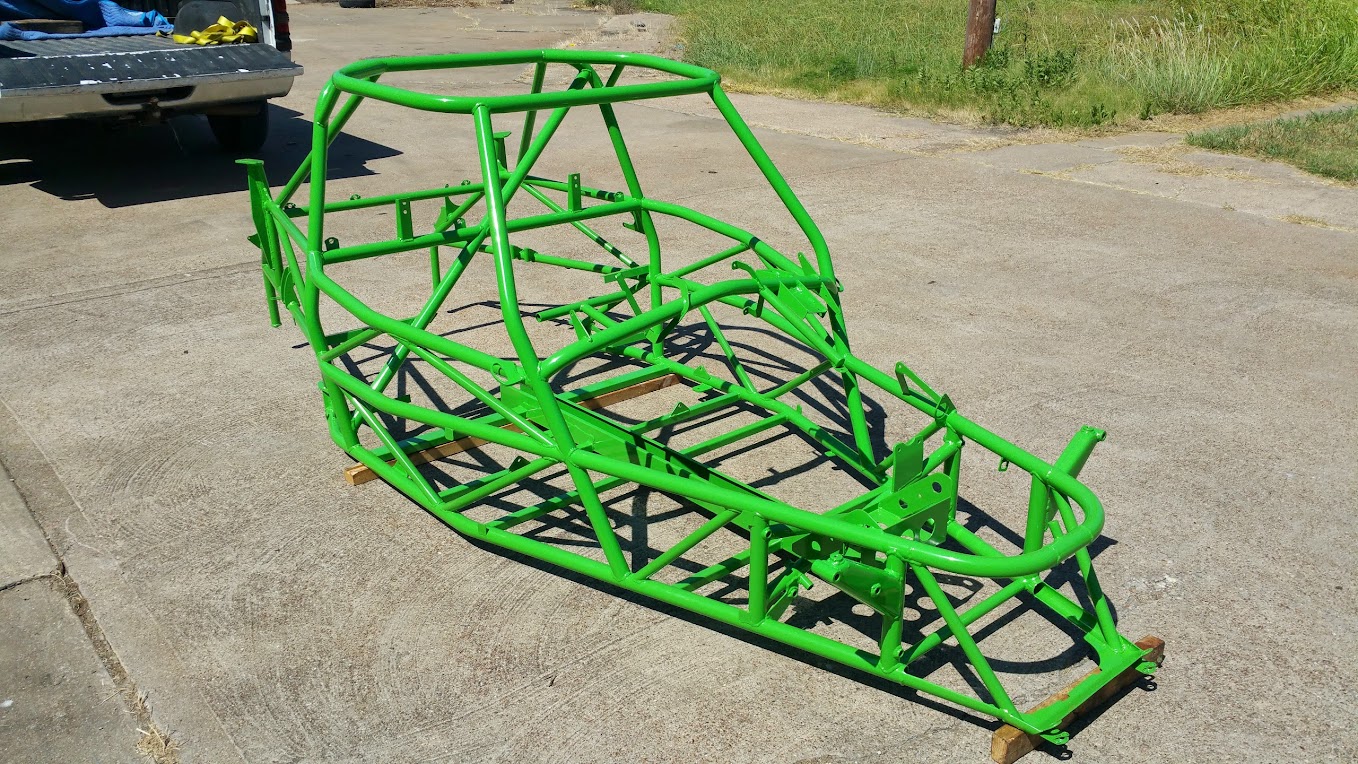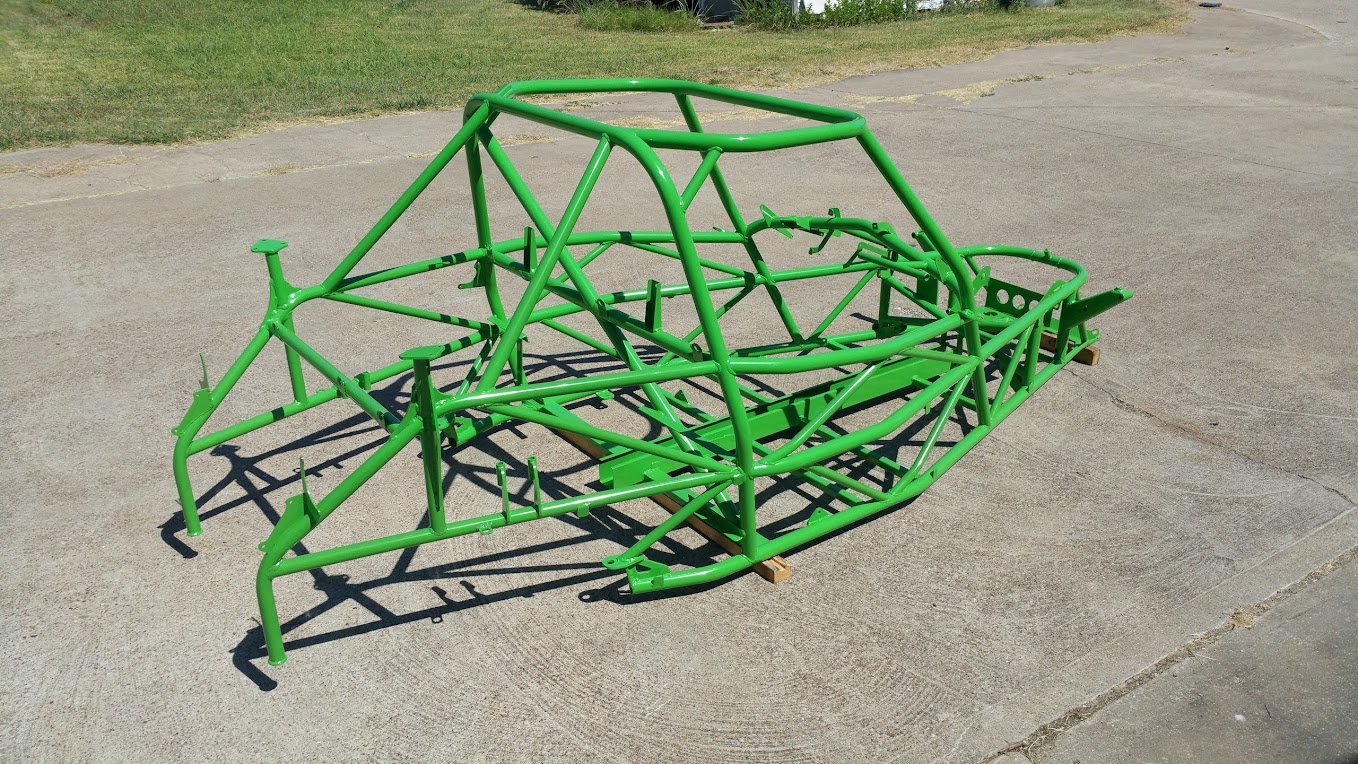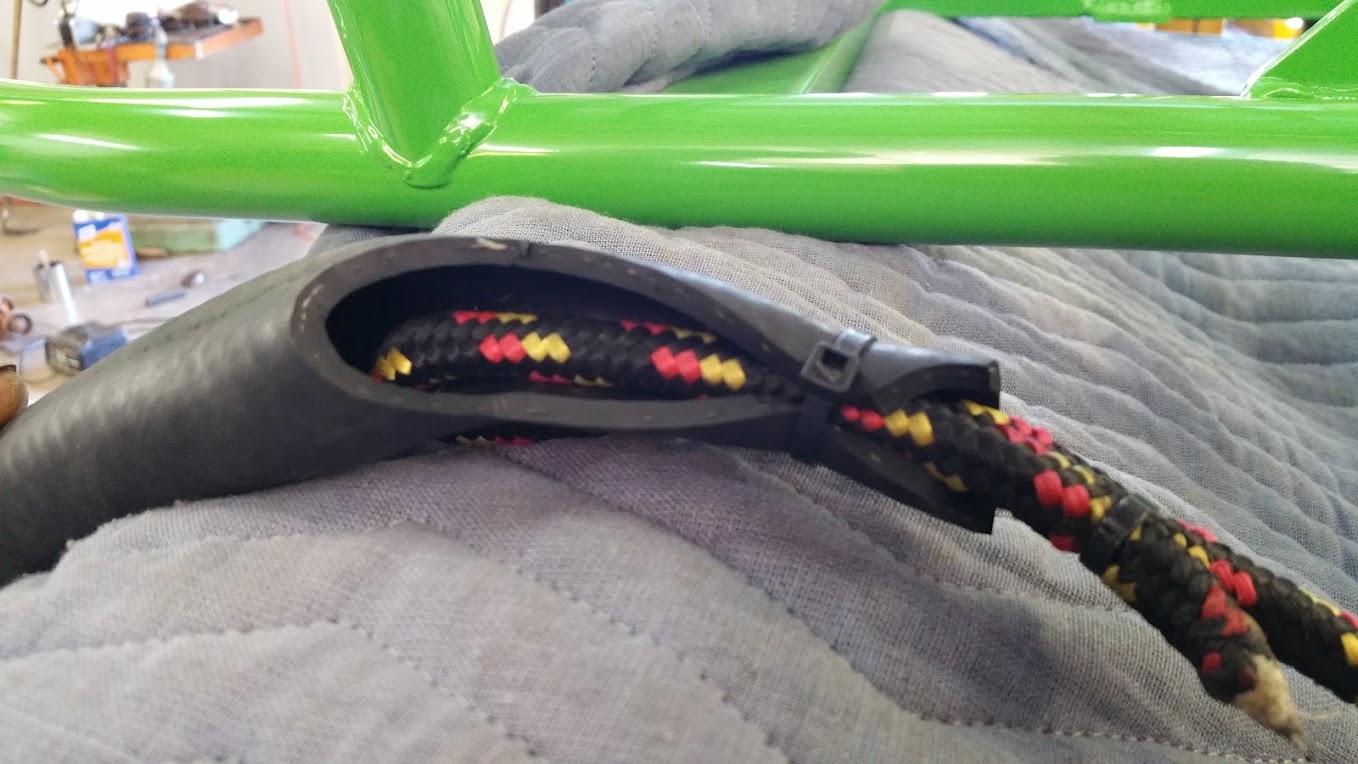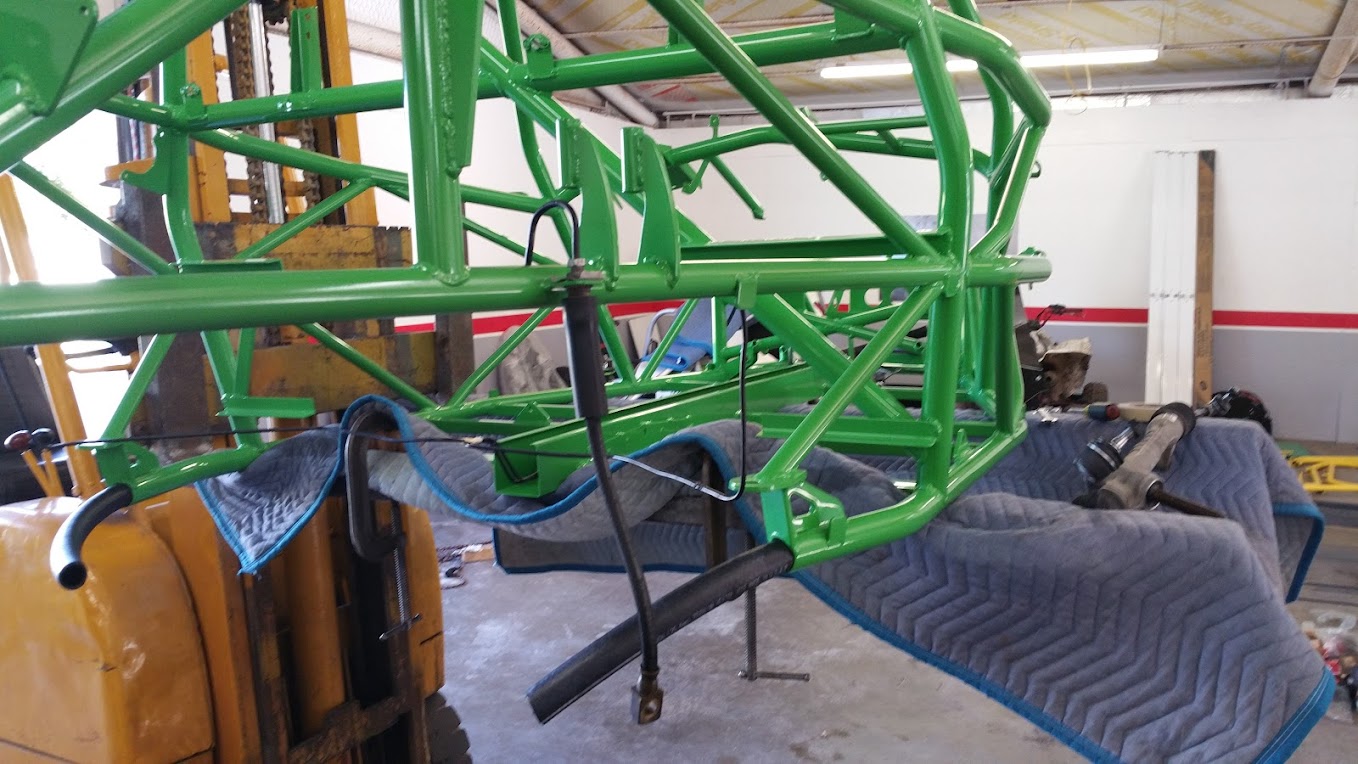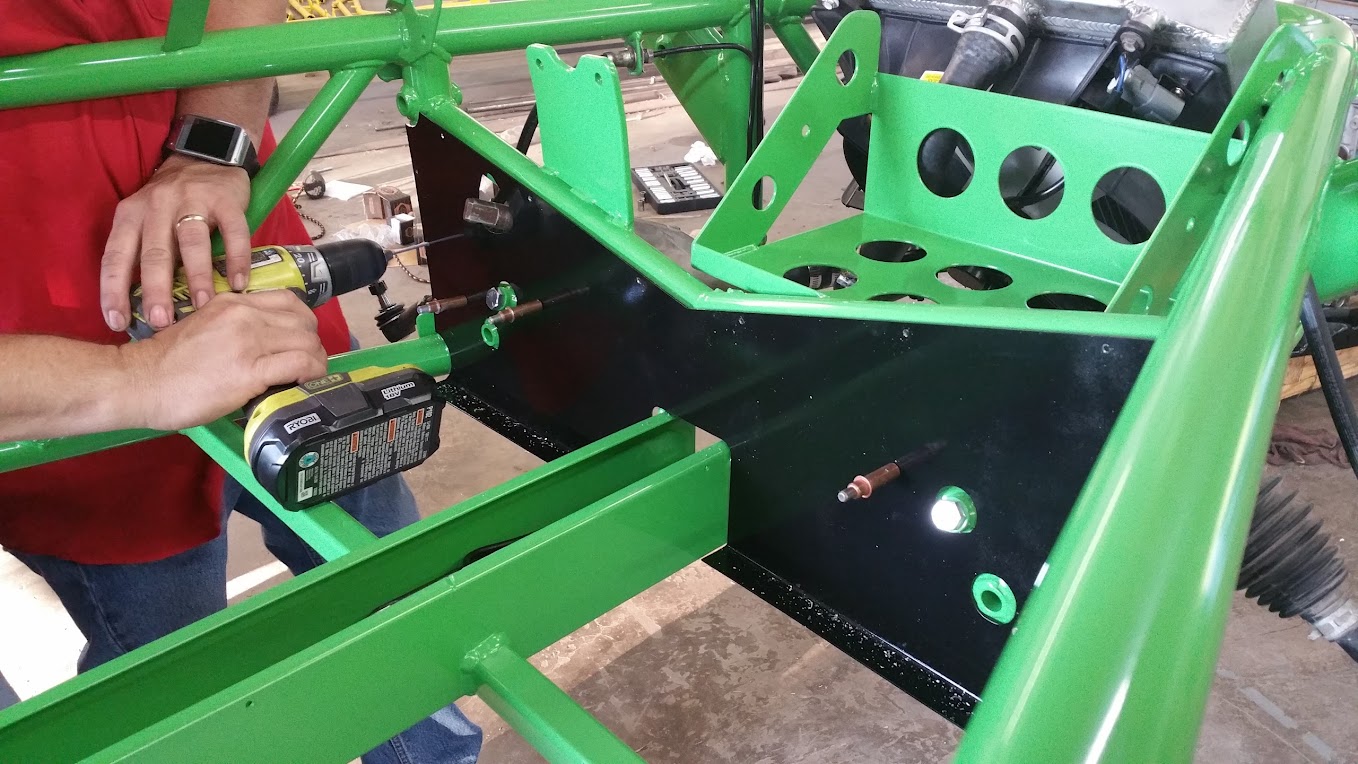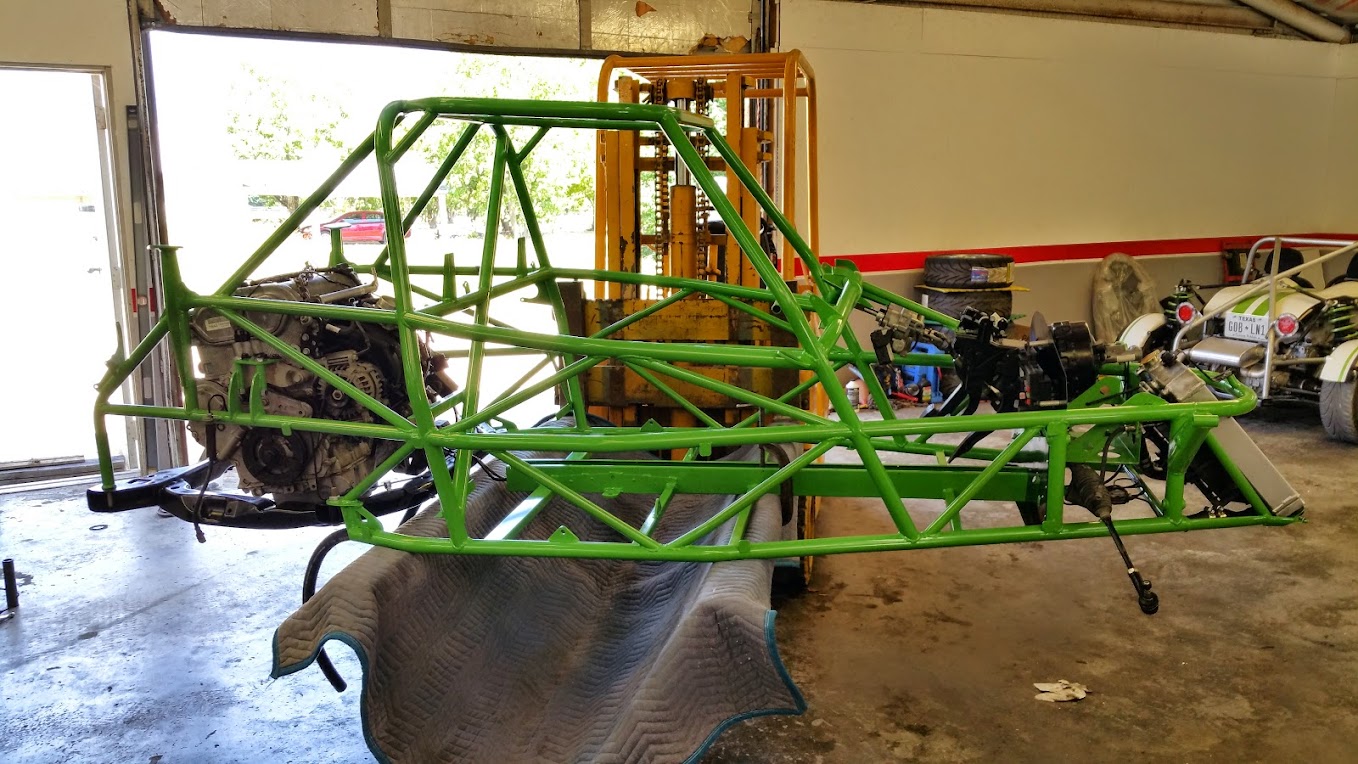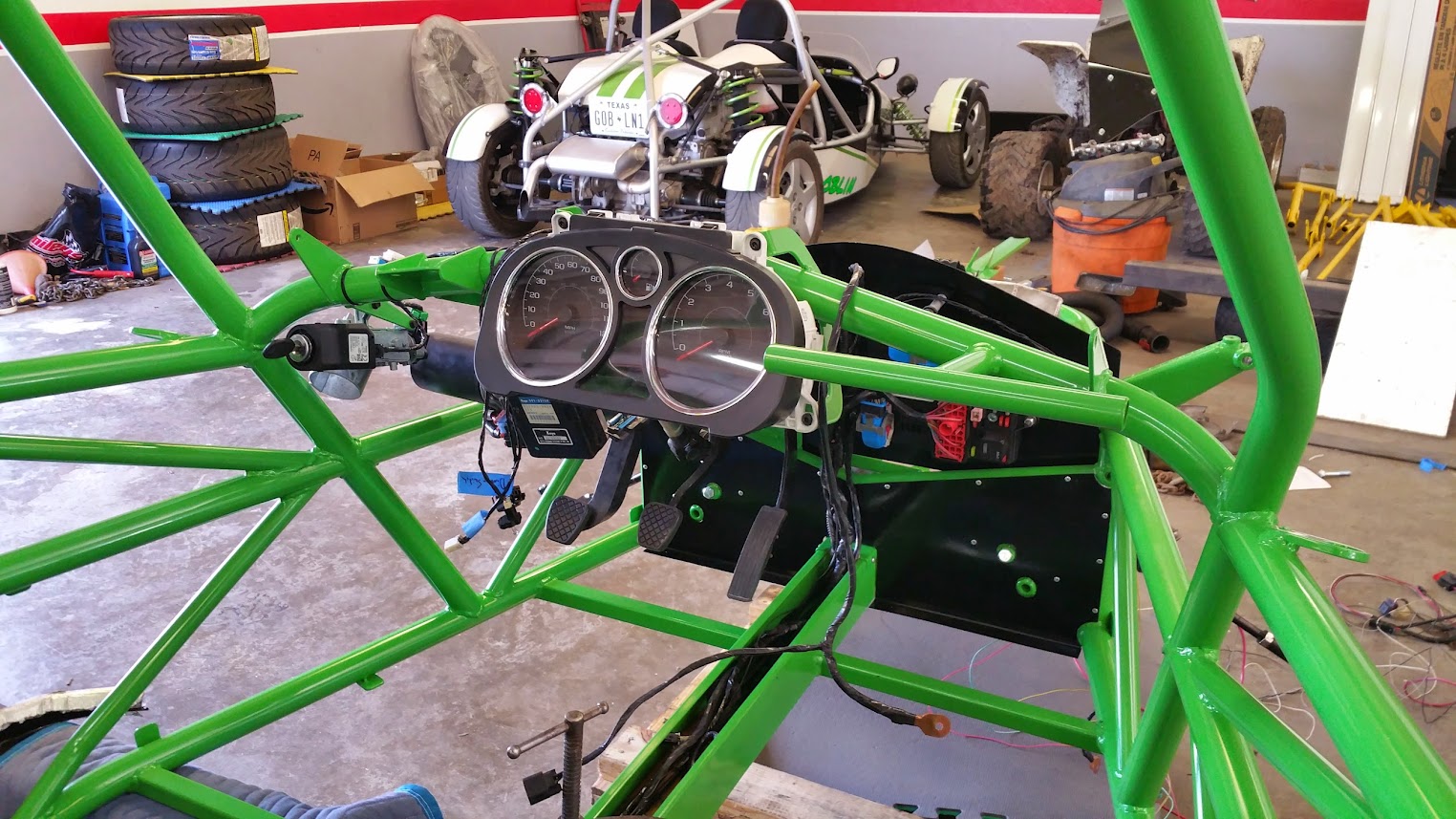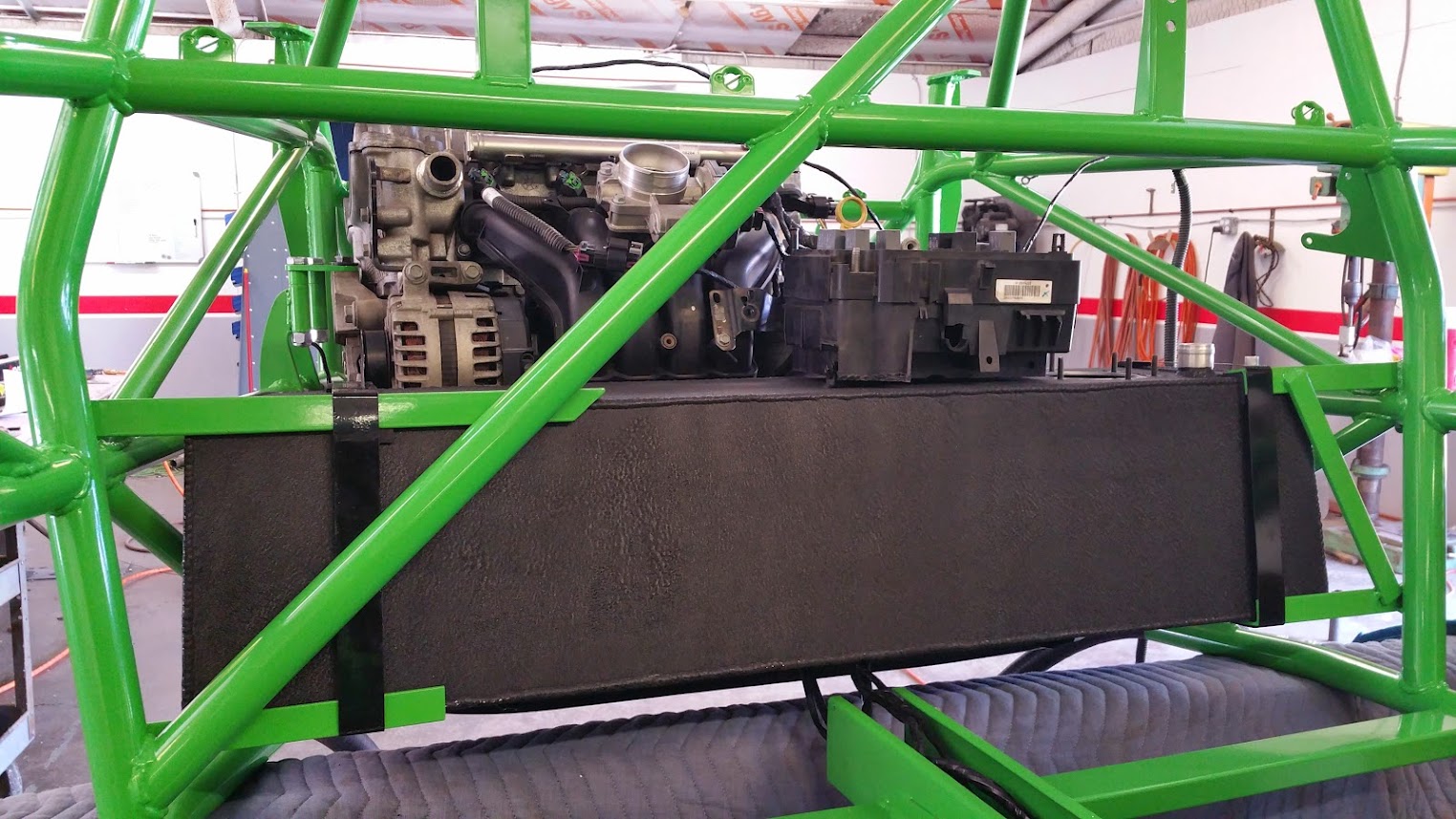It is hard to believe that it has been over 2 months since my last post. We've been quiet on here because my dad and I have been dividing every waking hour between the shop and the kit car. With the Goblin P2 frame now heading off to get powder coated, I figured it was a good time to catch everyone up before we start assembly.
After finishing the CNC tubing bender long ago, we prepared to fabricate the second chassis by first building a very rigid frame to act as a chassis jig. We had it finished and painted on May 22.
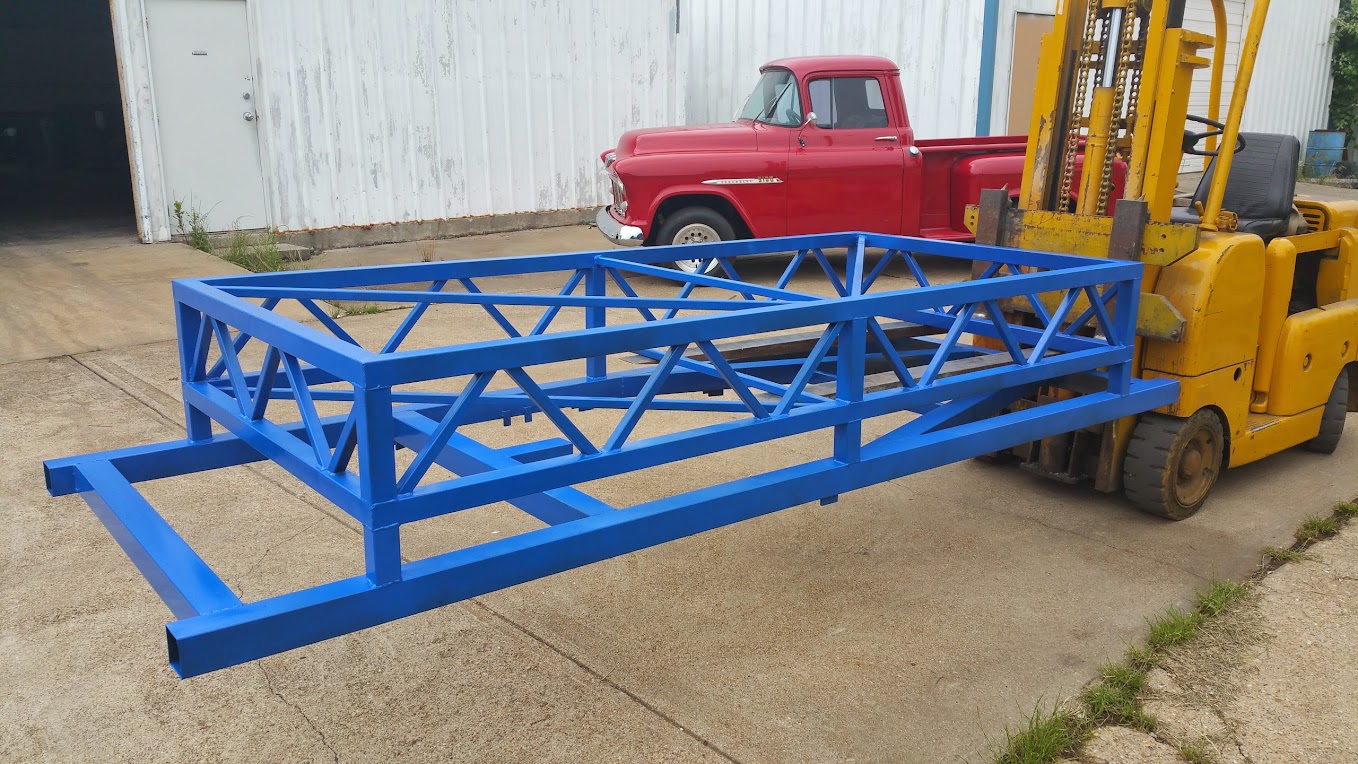
We started building from the floor up: lower frame rails, tunnel and floor bars. Then we added a temporary framework on the rear of the jig to install the main hoop. I was keeping track of the target bend measurements and the actual bend measurements of the tubes so that I could keep tweaking my bend gain and spring back equations. It worked out really well.
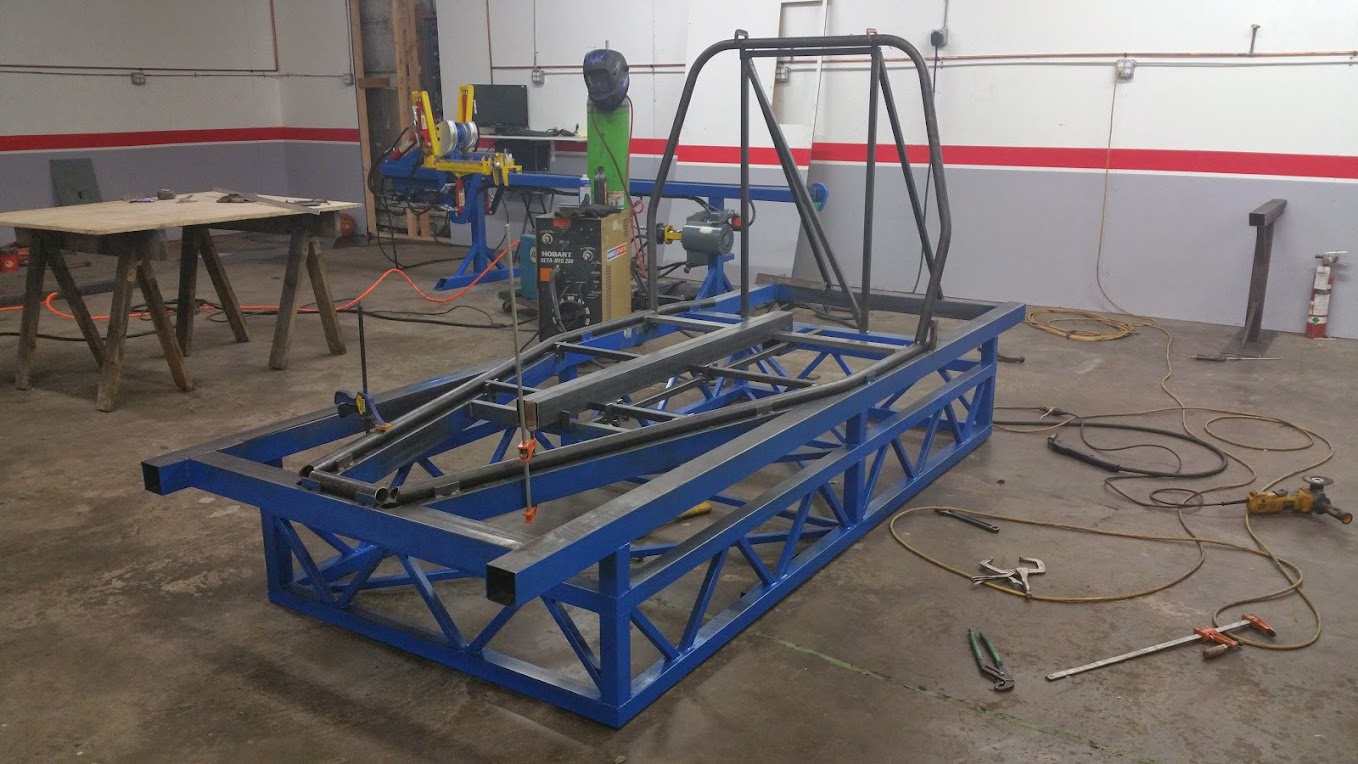
To align the front suspension, we built an aluminum fixture that bolts directly to the chassis jig. This fixture holds the mounting tubes for the control arms and front shocks in the correct place during fabrication.
After locating the suspension mounts we made the upper frame rails, roll cage front down tubes and halo.
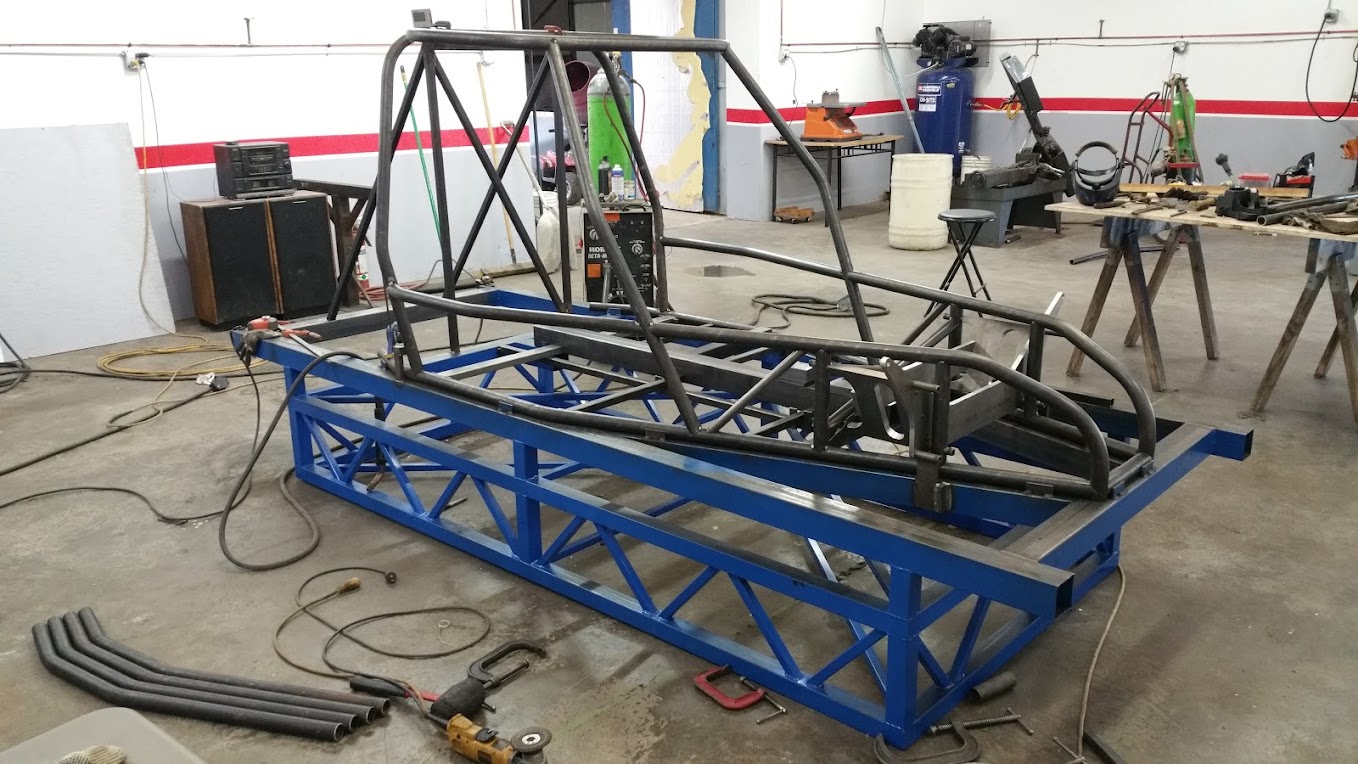
On the ground in that last photo you can see the upper door bars. Two of them are welded to the car and the other two became tools. The upper door bars make the car slightly harder to climb into than the short diagonals on the first prototype but they offer a lot more intrusion protection for the driver and passenger. You can see them installed in the next photo.
We made some simple mounts for the new seats and installed the driver seat to test the fit.

In that last photo you can also see another aluminum fixture extending back from the front suspension fixture. This one is used to locate the dash tube and dash accessories.
The first prototype didn’t have a hoop diagonal but this prototype, and all Goblins from now on, will have a diagonal and shoulder harness bar welded in.
Moving further toward the back of the car, we built a removable square tube frame to locate the upper strut mounts. This frame will also be used to locate the main hoop in future builds. The rear cage went together pretty easy.
We lifted the chassis off the jig to install a donor subframe and engine. With the subframe attached we were able to make the upper engine mounts.
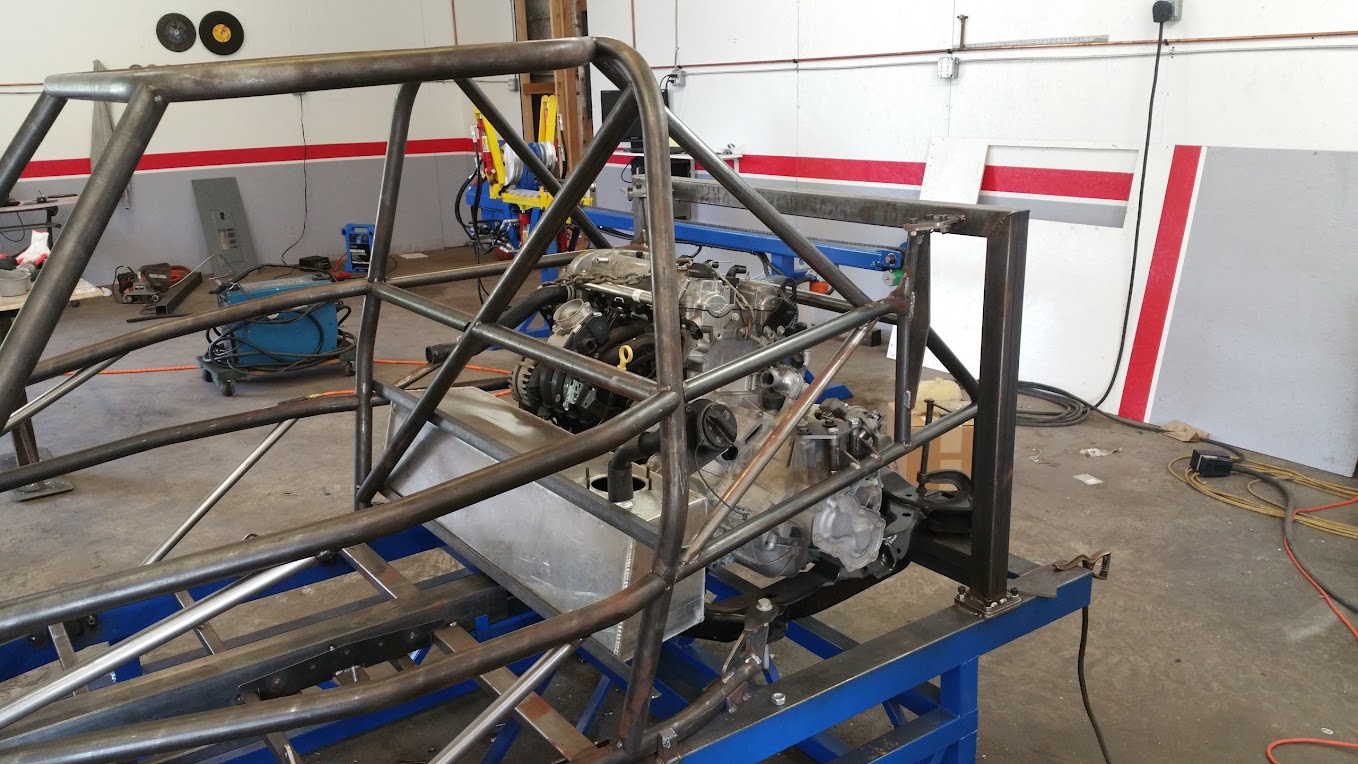
Observant viewers noticed a big change to our car in the last photo. For safety reasons, we moved the fuel cell to a more central location in the car. With the tank being behind the seats, it is better protected from being punctured in a crash and, as an added bonus, it is now larger than the first prototype (10 gallons vs. ~8 gallons).
So with the fuel cell in the back, where’s the radiator? Well, its located exactly where a radiator should be: at the front. There wasn’t room for the donor’s single core radiator in the nose, so we changed things up to use an aftermarket aluminum 3 core radiator. This required a change to the front of the frame and the fiberglass nose will have to be modified as well. The new nose will be shorter (far less likely to scrape the ground) and will have a nice big opening for air.
Another bonus of moving the fuel cell to the back was that it opened up a lot of room up front. This allowed us to reposition the steering rack in a way that makes it possible for us to use the donor Cobalt’s electric power steering. On top of that, we had room to install the donor brake booster. Both of these will reduce fatigue while driving around town and on the track but either can be removed if the driver doesn’t want them.
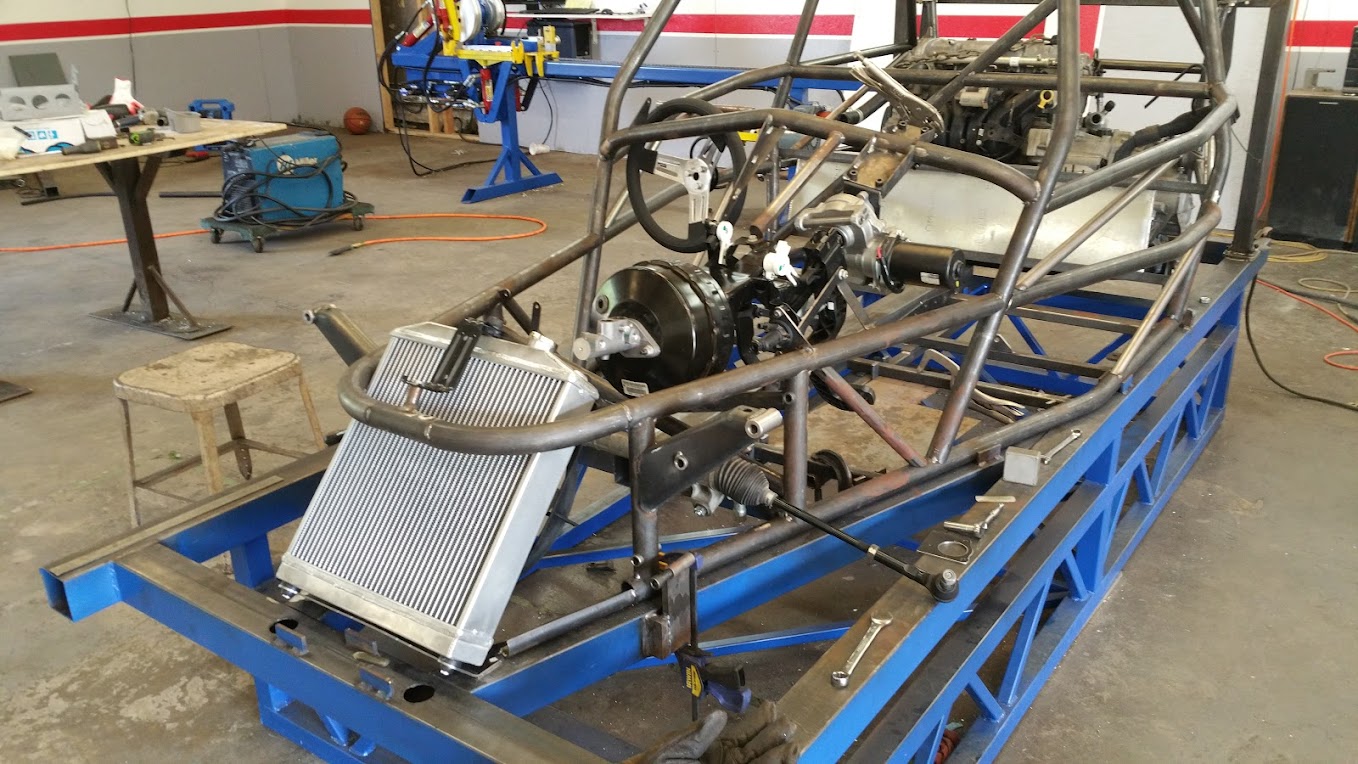
In that last photo you can also see our new front shock mount towers. We made them by cutting flat plate and forming them with a die on our hydraulic press. They are made as halves and then welded together.
I mentioned earlier that some of the tubes (specifically the extra door bars) were turned into tools. Here is a photo of our notching tools:
We set up a notching system that uses our largest drill press. To notch a tube for the car, you clamp the cut and bent tube into the appropriate tool, hook the plates on the end of the tool onto a fixture on the drill press and then notch the tube. It is easy, quick, consistent and didn’t cost us a bunch to set up.
With the frame complete, we moved on to the front suspension.
The control arms of prototype 1 were very simple but they were a little tight around the coilover so we weren’t able to stand the shock up much. On prototype 2, we wanted the shock and spring to be more effective, so we had to make more room for the shock to stand up. This was achieved by designing the control arms with bends in them to clear the coilover.
To bend the control arms we machined press dies and used the hydraulic press. Then each tube was snapped into a fixture on a CNC mill and the ends were cut. Finally, we fit the tubes into a weld fixture and welded each control arm.
After completing the control arms, we started on the steering knuckles. Just like the first prototype, we machined the uprights out of .75 inch aluminum plate. Instead of 1/2 inch rod ends out at the hub, we used chrome-moly rod ends with 3/4 shafts and 5/8 balls. The inner rod ends are still 1/2 inch, but they have been upgraded to chrome-moly as well.
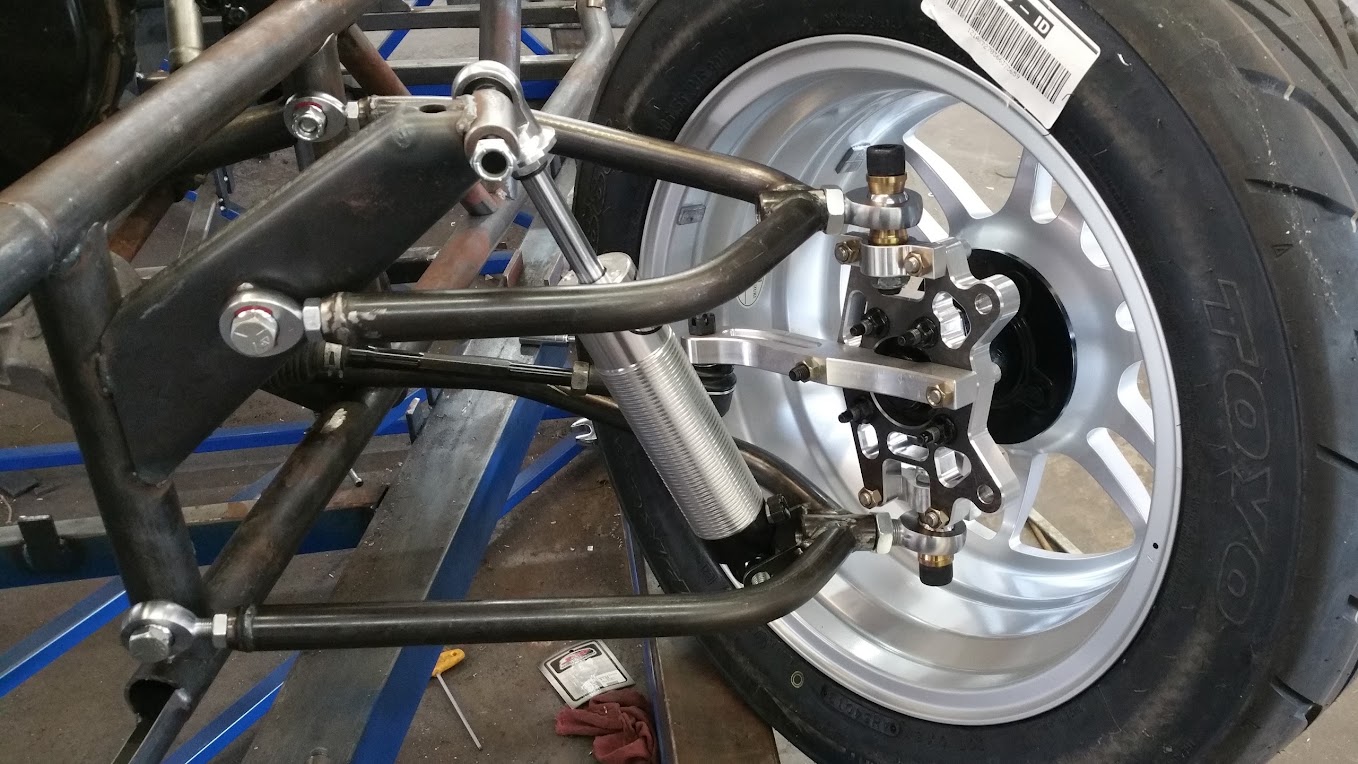
The rear of the car was easier to assemble and in no time we had the car down on its own four tires:
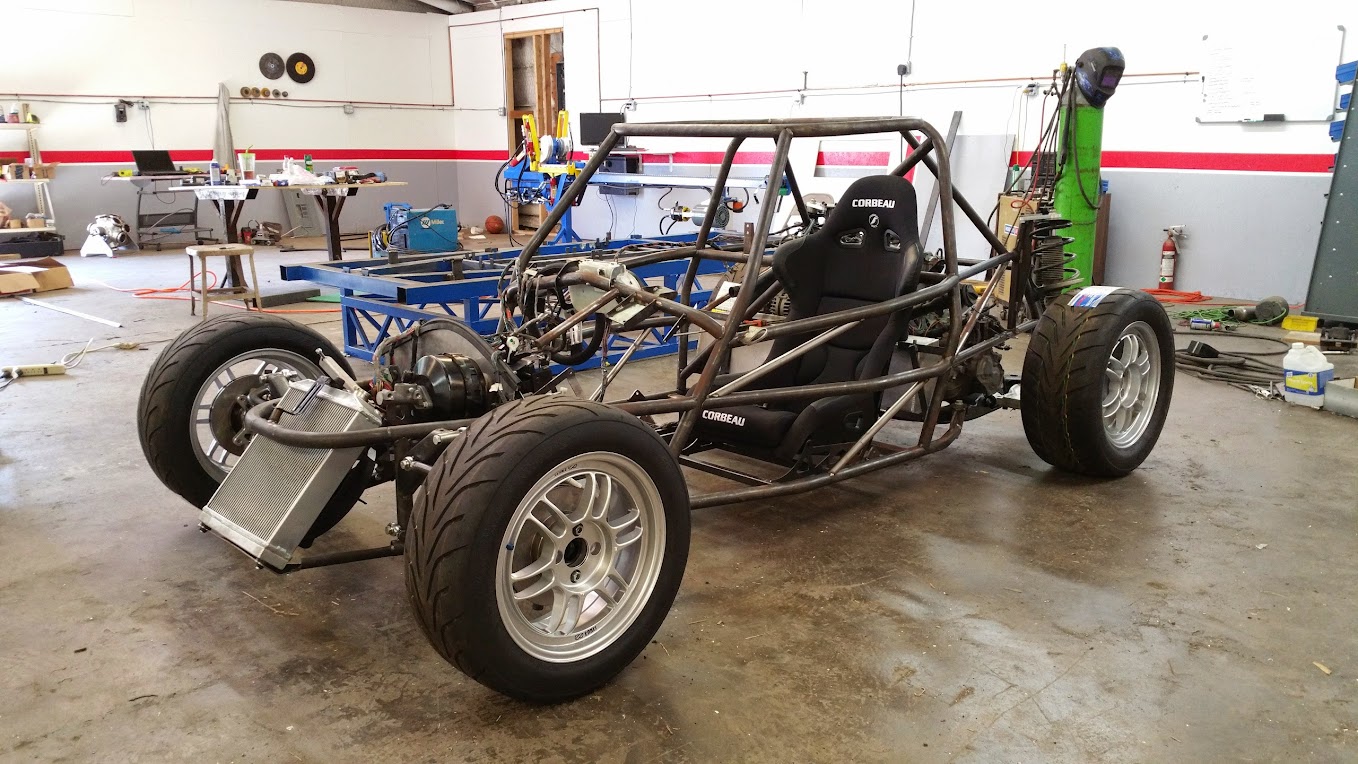
After taking that photo, we took it all back apart and welded out the chassis. Now it is at the powder coater getting a nice goblin green coating. Once it gets back, I’ll keep you all updated as we assemble it.










